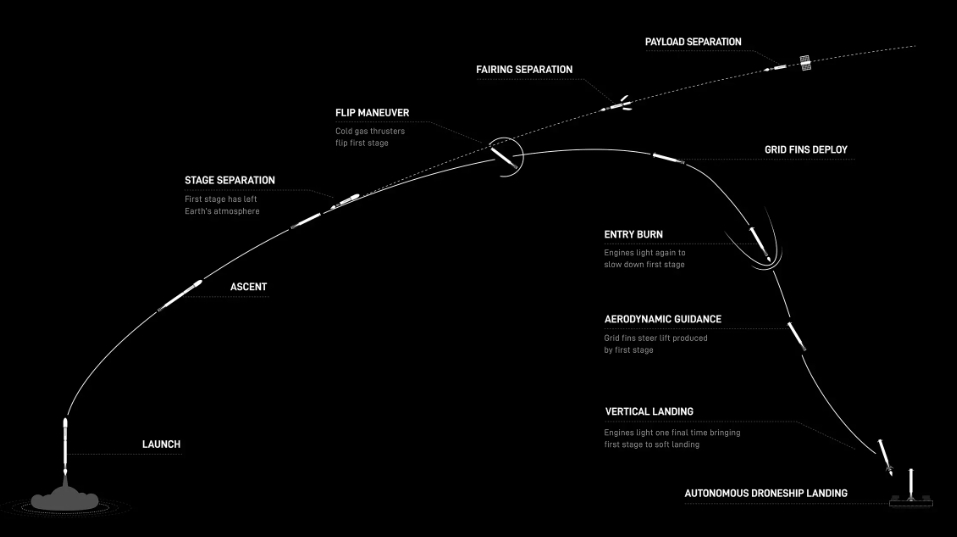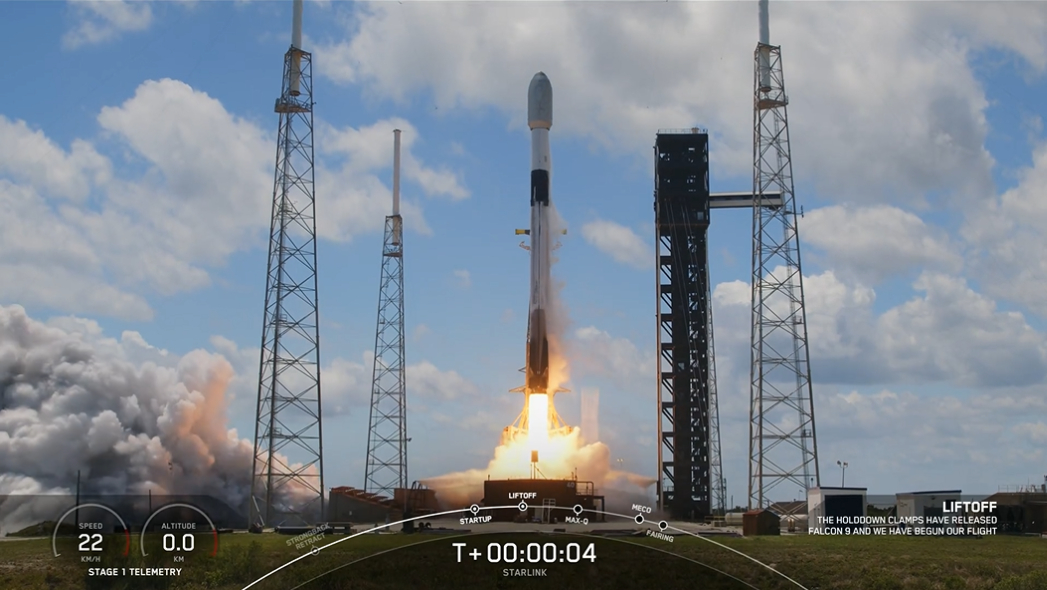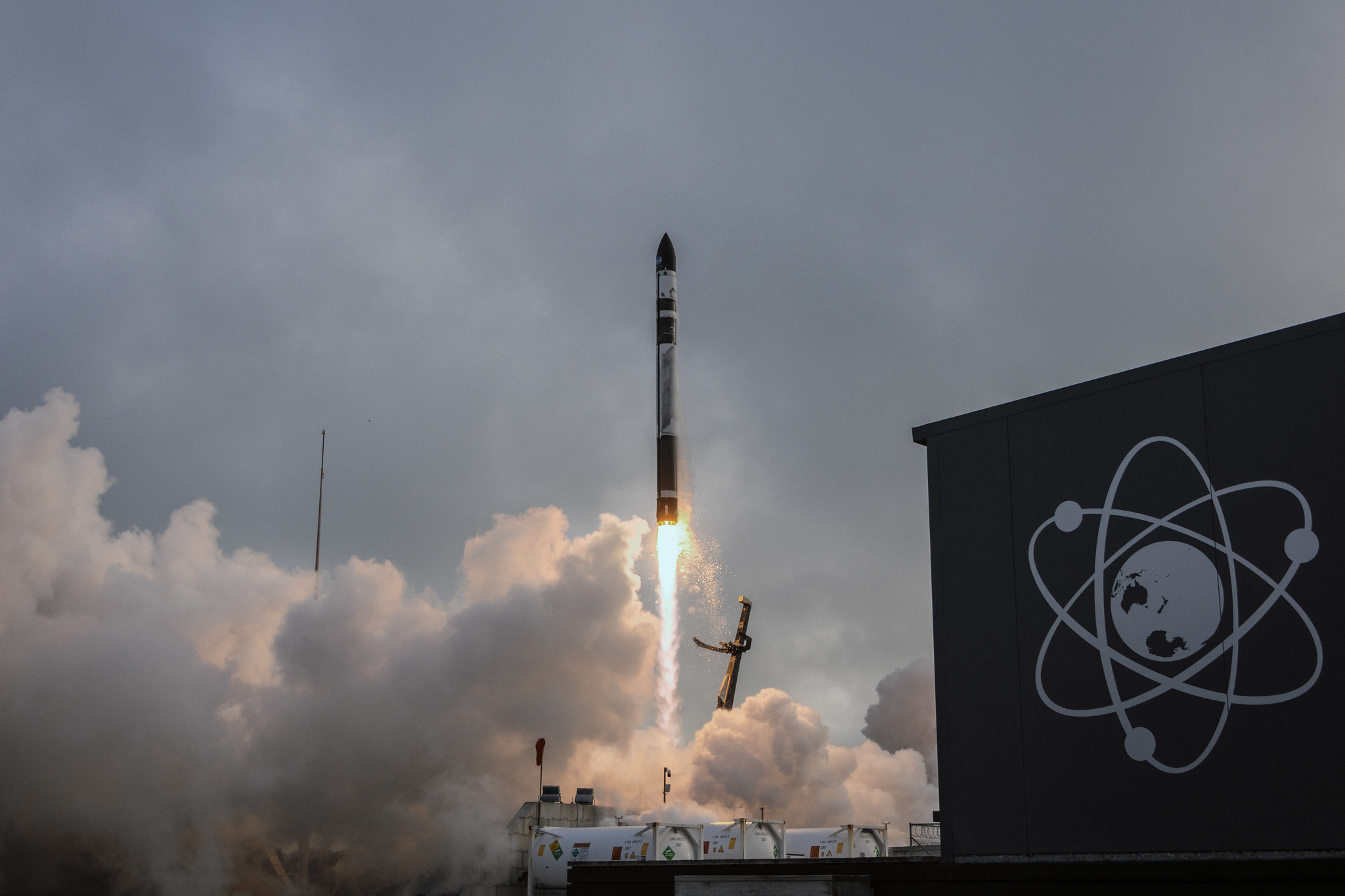It'll be a late lunch for SpaceX mission operators at Cape Canaveral due to the mid-day launch of another stack of Starlink satellites.
A SpaceX Falcon 9 rocket launched the Starlink 6-67 mission from Cape Canaveral Space Force Station in Florida today (May 14) at 12:38 p.m. EDT (1638 GMT). The rocket lifted off against a bright blue Space Coast sky, carrying 28 wireless internet satellites to low Earth orbit (LEO).
This is the fourth mission for the booster supporting today's Starlink launch. Designated B1090, the booster also supported SES' O3b mPOWER-E mission, the Crew-10 astronaut flight for NASA and the Bandwagon-3 rideshare mission last month.
B1090's nine Merlin engines cut off approximately 2.5 minutes into flight, followed quickly by stage separation. The Falcon 9's upper stage continue with its Starlink stack to LEO, as the booster slowed its descent ahead of its landing burn.
About 8.5 minutes after liftoff, B1090 landed safely on SpaceX's A Shortfall of Graviats drone ship, stationed in the Atlantic Ocean.
The 28 Starlinks are expected to be released from the rocket's payload adapter about one hour into flight. Each satellite will spend the next few days maneuvering into more specific orbits to within the Starlink megaconstellation.

SpaceX's Starlink network consists of more than 7,000 operational satellites and counting. As a whole, they operate in a lattice that blankets nearly all of the planet, save for the poles. Starlink offers users a high-speed internet connection from anywhere (other than the poles) customers are able to point their Starlink receiver toward the sky.
Today's launch was SpaceX's 58th Falcon 9 mission of 2025 and 60th liftoff so far this year. The other two missions involved Starship, SpaceX's next-generation super-heavy-lift rocket. The company is gearing up for another Starship test flight as early as May 21.










 English (US) ·
English (US) ·